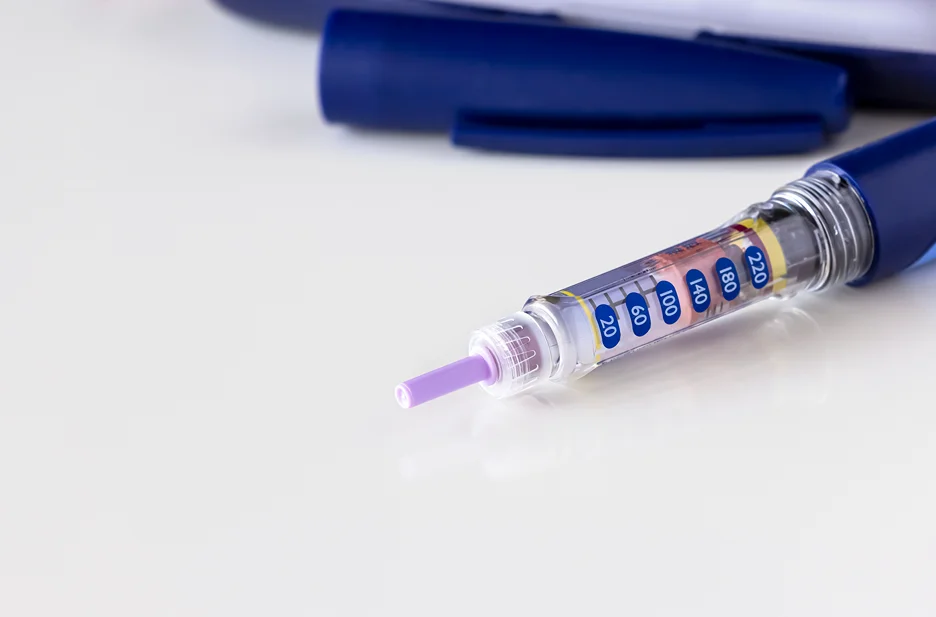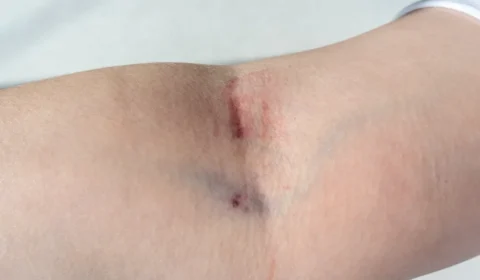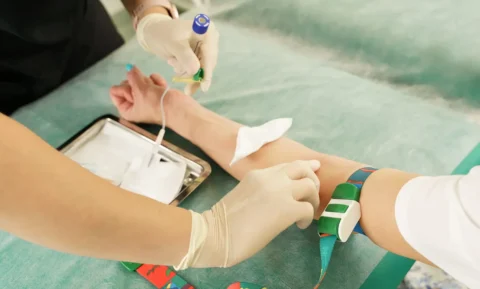Mastering the Art of Effective Tirzepatide Dosing for Optimal Glycemic Control and Weight Reduction
As nurses at the forefront of patient care, your role in managing chronic diseases such as diabetes mellitus is indispensable. One of the newest tools in our therapeutic repertoire is tirzepatide, a potent GLP-1 receptor agonist. With impressive outcomes for glycemic control in adults with type 2 diabetes and considerable reductions in body weight, tirzepatide is becoming an exciting alternative for treatment.
Navigating the intricacies of tirzepatide dosing might seem overwhelming, but this comprehensive guide aims to equip nurses with a clear and practical understanding of this medication, its dosing, and potential adverse reactions.
Tirzepatide Dosing: What You Need to Know
Tirzepatide is a dual GIP/GLP-1 receptor agonist used for the treatment of type 2 diabetes mellitus. It is administered as a subcutaneous injection and works by activating both the GIP and GLP-1 receptors, which are key mediators of insulin secretion and glucose metabolism
Tirzepatide administration starts with an initial dose of 2.5 mg, an approach designed to minimize the risk of adverse reactions. These reactions, often gastrointestinal in nature, are a common feature with GLP-1 receptor agonist therapy. As nurses, it is crucial to educate patients about the importance of starting with a low dose and gradually escalating.
The tirzepatide dosing schedule typically begins with this 2.5-mg dose and gradually increases to the tirzepatide 5mg dosage and potentially higher, depending on the individual’s response and tolerance. This personalized dosing regimen ensures maximum dose efficiency while keeping side effects at bay.
Typical Dosing Per Week
| Week | Dose |
| 1-4 | 2.5mg |
| 5-8 | 5mg |
| 9-12 | 10mg |
| 13 and onward | 15mg |
It’s essential to remember that while treatment initiation at a higher dose may provide quicker results, it also increases the risk of adverse reactions, leading to treatment discontinuations. The goal is to maintain persistent glycemic control in patients while ensuring their comfort and safety.
Tirzepatide for Weight Loss: Balancing Benefits and Risks
Interestingly, the effects of tirzepatide extend beyond glycemic efficacy. Its significant role in weight reduction opens potential avenues for its use in the treatment of obesity. However, tirzepatide dosing for weight loss necessitates a delicate balance between benefits and risks. The dose of the study drug for weight loss is determined by factors such as the patient’s body mass, baseline in body weight, and weight loss targets.
Body Mass
One of the crucial factors in determining the tirzepatide dosage is the patient’s initial body mass. A patient’s body mass index (BMI), which provides a measure of body fat based on height and weight, can help healthcare providers estimate the degree of obesity and identify an appropriate starting dose. Additionally, this measure can also guide dose escalation, with higher BMIs generally necessitating increased dosages to achieve significant weight reduction.
Baseline Body Weight
Another key factor is the patient’s baseline body weight. Establishing a clear understanding of the patient’s starting point allows for more precise monitoring of the progress and effectiveness of the therapy. It helps determine whether the current dose is leading to the expected weight reduction or if adjustments are needed.
Weight Loss Targets
Lastly, setting weight loss targets is another essential aspect of tirzepatide dosing for weight loss. These targets should be realistic, considering the patient’s overall health status, lifestyle, and willingness to adhere to the treatment regimen. Once these targets are established, the tirzepatide dose can be adjusted to support these goals.
In achieving weight loss diabetes medication targets, tirzepatide doses may be increased, with the maximum dose achieving substantial weight reduction. However, as with glycemic control, it is crucial to ensure that the dosing regimen does not lead to uncomfortable or harmful side effects.
While escalating tirzepatide doses may lead to substantial weight reduction, it’s important to consider potential risks. Higher doses may be associated with an increased incidence of adverse reactions, such as nausea and abdominal pain. Therefore, patients and healthcare providers must maintain open communication about any side effects experienced throughout the treatment.
Tirzepatide’s Adverse Reactions and Their Management
Like all medications, tirzepatide has potential adverse events. Common side effects include abdominal pain, injection site reactions, and slower gastric emptying, which may lead to feelings of nausea. More severe but less common risks include a history of pancreatitis and potential renal impairment.
- Abdominal Pain: Abdominal discomfort is a common side effect of many GLP-1 receptor agonist therapies, including tirzepatide. Persistent or severe abdominal pain may indicate serious conditions like pancreatitis. Over-the-counter medications can be used to manage mild abdominal pain, but consultations are crucial before starting any new medications.
- Injection Site Reactions: Injection site reactions can occur with subcutaneous injections of tirzepatide. These may include redness, itching, or swelling at the injection site. To mitigate these, rotate the injection sites regularly and avoid injecting into areas of the skin that are tender, bruised, or scarred. Applying a cold pack to the injection area can also help reduce discomfort and inflammation.
- Slower Gastric Emptying Leading to Nausea: Tirzepatide slows gastric emptying, which helps control blood sugar levels but can also cause feelings of nausea. Taking medication with food can sometimes help to alleviate this symptom. However, if nausea persists, it may be helpful to eat smaller, more frequent meals instead of three large ones. Ginger or peppermint tea may also help soothe the stomach.
Nurses play a pivotal role in managing these symptoms and ensuring patient comfort. Regular monitoring of serum calcitonin and routine checks for symptoms of thyroid tumors, like persistent hoarseness, may be necessary. Be vigilant about patient compliance, as skipping doses or overdosing can lead to adverse reactions, affecting patient success with the medication.
Tirzepatide vs. Other GLP-1 Receptor Agonists: A Comparative Analysis
The landscape of antidiabetic agents, including GLP-1 receptor agonists, is ever-evolving. Tirzepatide, with its dual glucose-dependent manner of action, is emerging as a potential game-changer.
Compared to its counterparts, tirzepatide has shown impressive results in the SURPASS-2 trial. It resulted in superior reductions in HbA1c from baseline and body weight at week 40, providing strong evidence for its use. However, as with any new medication, long-term data on its efficacy and safety, including cardiovascular events, are yet to be established.
Incorporating Semaglutide and Tirzepatide into Your Clinical Practice

Ready to take your clinical practice to new heights? Discover the keys to success!
Patients today are seeking comprehensive healthcare solutions. If your practice lacks a well-rounded weight management service, you could be missing out on significant business opportunities.
Moreover, insufficient knowledge or improper administration of weight management medications like Semaglutide and Tirzepatide can pose risks to patient safety and harm your professional reputation.
Introducing the Implementing Semaglutide and Tirzepatide into your Aesthetic Practice – a proven strategy to unlock your practice’s full potential!
This course is led by Nurse Practitioner Nikki Plourde, an experienced professional with over a decade of experience in Family Medicine and the successful application of weight management medications. She will guide you through every step of implementing an effective weight management program in your practice.
Enrolling in this course will provide you with:
- A comprehensive understanding of Semaglutide and Tirzepatide, their contraindications, mechanisms of action, side effects, dosing guidelines, and monitoring requirements.
- An extensive online lesson plan complemented with a recorded PowerPoint presentation delivering the essential knowledge you need.
- Instructions for dosing conversion between Semaglutide and Tirzepatide.
- A step-by-step tutorial on ordering these medications, complete with real-world online examples.
- Innovative business and marketing strategies, along with a detailed cost breakdown and ROI evaluation.
- Guidelines for scheduling patient appointments and follow-ups, including pre-appointment questionnaire templates.
- Sample protocols, consent forms, SOAP notes, patient questionnaires/handouts, and medication safety sheets.
Additionally, your course purchase entitles you to group rate pricing for Semaglutide and Tirzepatide!
Don’t let your practice fall behind. Equip yourself with the knowledge and tools necessary to offer a comprehensive weight management solution and watch your practice thrive. With Nikki Plourde’s ongoing one-on-one support, your path to success is clear.
Click Here and seize this opportunity to revolutionize your clinical practice today!






